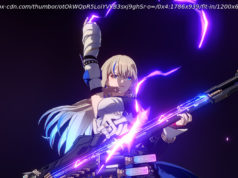Our Microsoft Surface Book 2 13 review answers the question: did Microsoft make its most premium 2-in-1 an even better notebook?
This review is for the 13-inch version of the Microsoft Surface Book 2. If you’re looking for the Surface Book 2 15-inch, go here.
Microsoft wowed us when it introduced the original Surface Book and showcased its ability to produce innovative products that create entirely new PC categories. Watching the display tear off to become a usable tablet with active pen support felt like gazing into a time machine set firmly to the future. Two years later, Microsoft continues to leverage the design, releasing two versions of the Surface Book 2: the 13.5-inch and 15-inch. Other than size, they’re nearly identical in appearance. In fact, they’re even hard to tell apart from the original and the mid-term Performance Base upgrade — that is, until you turn them on and start running them through their paces.
The model we’re reviewing here is a higher-end configuration, decked out with an eighth-generation quad-core Intel Core i7-8660U (the fastest available), Nvidia GTX 1050 GPU, 16GB of RAM, a 512GB solid state drive (SSD), and an ultra-sharp 13.5-inch display running at 3,000 x 2,000 resolution (267 PPI). It’s very expensive at $2,500, but you can drop down to a seventh-generation dual-core Intel Core i5-7200U with integrated graphics, 8GB of RAM, and 256GB SSD for a (slightly) more reasonable $1,500. You can also bump up our review configuration to a 1GB SSD and spend a whopping $3,000.
In our Surface Book 2 review, we consider whether its updated guts are enough to justify the huge investment.
There’s a reason why Microsoft didn’t mess with the original Surface Book’s design: it’s just that good. The magnesium chassis is solid as a rock, with zero flexing or bending no matter where you poke or prod. Seriously, the thing is built like a tank. It’s also innovative with its push-button, “muscle wire” latching mechanism that makes detaching the display downright fun. The only notebook that matches the Surface Book 2 in build quality is the latest MacBook Pro 13, but Apple’s design isn’t nearly as daring.
The “ dynamic fulcrum ” hinge, which is required to push the display farther back to better balance the weight created by jamming a complete PC into the display, remains an oddity that takes some getting used to. It makes the Surface very thick and rounded in the rear, and it creates a sharp angle whereby the display doesn’t sit flush with the keyboard. Theoretically, that means that debris could get in between and cause some problems, but we haven’t seen too many users complaining about it.
To stress the point, the Surface Book 2 isn’t the thinnest (0.51 to 0.90 inches) or lightest (3.38 pounds) 2-in-1 notebook around. Other 2-in-1s, such as the Lenovo Yoga 920 (0.50 inches and 3.02 pounds) and HP Spectre x360 13 (0.53 inches and 2.78 pounds), are considerably thinner and lighter. They’re also built well, but they can’t match Microsoft’s machine for pure granite-like solidity.
And of course, flipping their displays around results in a tablet form factor that’s not nearly as comfortable to carry around and use as the Surface Book 2’s almost unbelievably thin (0.30 inches) and light (1.6 pounds) tablet portion. The Surface Book 2 is just as flexible, only rather than spinning the display, you detach and reverse it for multimedia and drawing modes.
Whether those are better looking machines in terms of pure aesthetics comes down, as always, to personal preference. We like the Surface Book 2’s conservative silver-grey color, but some others might prefer a little more panache. The Spectre x360 13, in particular, offers a bit more ostentation with its Dark Ash Silver with Copper Luxe accents color scheme.
Finally, we should note that the Surface Book 2’s main PC component, the tablet, is completely fanless. That means that unless you fire up the Nvidia GTX 1050 GPU in the base, you won’t hear any fan noise. Among other 2-in-1s, the newest Surface Pro stands out with a similarly quiet design, but only for the slower Core i5 configurations.
Breaking that silence, unfortunately, is a very serious case of coil whine, which creates a maddening cacophony of electronic buzzing, fritzing, and whirring that’s obtrusive and distracting in a quieter environment.
It seems like a fairly widespread problem judging by this Reddit thread and other references in a variety of forums, and our review machine was the issue’s poster child.
It’s most noticeable when the Windows 10 power slider is pushed all the way to “Best Performance,” and oddly enough only when the CPU is idle. Push the CPU to full speed and the problem disappears. The Surface Book 2 13 isn’t alone in suffering from coil whine — the 15-inch model can have some as well, for example — but it’s just worse than we’ve seen with other notebooks.
The Surface line has never been known for offering the best in connectivity options, and for the most part, the Surface Book 2 13 follows that trend. There are two USB-A 3.0 ports, both on the left-hand side, along with an SD card reader. On the right side is the Surface Connect port that provides power and the connection to the Surface Dock peripheral, and a new USB-C 3.1 port that is Microsoft’s only nod to future peripheral support.
Unfortunately, the USB-C port is only Gen 1, meaning it’s limited to 5 gigabits per second (Gbps) speeds and it doesn’t provide Thunderbolt 3 support. That means it won’t support the fasted add-ons and that external monitor support is limited. Wireless connectivity includes the usual 802.11ac Wi-Fi and Bluetooth 4.2 radios. When you compare to just about every recent notebook or 2-in-1, the Thunderbolt 3 omission is a serious one, and might give some buyers reason to pause.
The Surface Book 2’s keyboard is only slightly changed from the previous versions, and that’s a good thing. Microsoft decreased the key travel the tiniest bit (from 1.6mm to 1.55mm) and changed the feel just slightly to be closer to the very good keyboard on the Surface Laptop. But you’d probably be hard-pressed to tell the difference from the older models.
We found the keyboard to offer a crisp, precise action that’s consistent across all of the keys. Our only concern is that it’s slightly loud. Keyboards in general have improved over the last several years, and the Surface Book 2 has some tough competition. The keyboard on the HP Spectre x360 13, for example, is very good as well, as is the Yoga 920’s.
The touchpad is even better. It’s large enough to be eminently usable but not so large as to take up too much space below the keyboard. It has a smooth glass surface that provides just the right amount of resistance, and its support for the Windows Precision Touchpad protocol is absolutely perfect. Multitouch gestures work flawlessly, and the Surface Book 2’s touchpad thus remains the gold standard.
Of course, the machine is a 2-in-1, and so it also sports a multitouch display that benefits from Microsoft’s continuous effort to reduce the space between the glass and the touch electronics for the best possible response. The Surface Pen also benefits from these efforts, while also gaining the ultra-low latency, 4,096 levels of pressure sensitivity, and tilt support introduced with the 2017 Surface Pro. Simply put, it’s the best inking experience available in a Windows 10 PC.
Finally, the Surface Book 2 sticks with Microsoft’s usual facial recognition for Windows 10 Hello password-less login. It works perfectly, recognizing us every time and very quickly indeed.
The Surface line universally enjoys some very nice displays, with high contrast and great brightness. The Surface Book 2 retains the same 3,000 x 2000 (267 PPI) Panasonic panel used in the previous models, and that’s a good thing. Of course, like all Surface machines, it’s in the 3:2 aspect ratio that’s great for productivity (but with some video letterboxing).
Our colorimeter agreed. The Surface Book 2 scored well in just about every metric. Maximum brightness was excellent at 402 nits, and contrast was a stunning 1,460:1. Gamma was close to perfect 2.3 (2.2 is ideal), meaning that images and video will be just slightly darker. Overall, the display should make for deep blacks and awesome text (given the sharpness as well).
Only color gamut support was average, at 94 percent of sRGB and 73 percent of AdobeRGB. Color accuracy was good at 1.90, where 1.0 and less is indistinguishable to the naked eye. That means that anyone looking for the utmost in color support and accuracy might want to look at a different machine.
So how does that compare to most notebooks, including our comparison group? Simply put, you need to pick up another Surface device or a MacBook if you want a better overall display. Or check out the Sharp IGZO displays that Dell puts in machines like the XPS 15.
In practice, the display is just as good as these objective results would indicate. Black text is pin sharp and contrasts nicely against a white background, making the productivity experience simply excellent. Images look great with fairly natural colors, and video is fantastic even if the display isn’t quite 4K resolution. In short, the Surface Book 2 has a superior display to the vast majority of its competition.
The Surface Book 2 has two front-firing speakers set into the edge of the display on each side towards the top. They put out loud audio that’s clear and bright, but that lacks in bass like most notebook speakers. It’s great audio for watching movies and TV shows and for listening to music, but anyone whose favorite music tends toward the lower registers will want to put on a pair of headphones.
The Surface Book with Performance Base improved the machine’s GPU, but it held onto the same sixth-gen Intel processor. With the Surface Book 2, Microsoft has finally caught up, putting in Intel’s eighth-generation, 15-watt quad-core processors for a nice boost in both performance and efficiency.
We’ll note that Microsoft has incorporated a power slider that in its newer Surface machines has a real impact on performance. It’s accessed by clicking on the battery icon in the system tray and selecting from “Recommended,” “Better Performance,” and “Best Performance.” You can dial in better performance simply by moving the slider to the right – or slow things down to reduce fan noise and power draw by moving the slider to the left. “Recommended” is the default, and so this is where we focused our benchmarks, but note the “Best Performance” results in the graph.
As we expected, the Surface Book 2 performed admirably in CPU-intensive tasks. In Geekbench 4, for example, the machine scored a solid 4,528 in single-core mode and 14,510 in multi-core. That’s in line with the Lenovo Yoga 920’s 4,683 and 14,566 respectively, and it blows away seventh-generation competitors like the earlier model of HP’s Spectre x360 15.
On our more demanding and real-world Handbrake test that encodes a 420MB video to H.265, the Surface Book 2 was able to finish the task in 740 seconds. The Yoga 920 was faster at 613 seconds (the Surface Book 2 took 650 seconds in Best Performance), but the Surface Book with Performance Base took much longer at 983 seconds. The Lenovo Yoga 720 15 with Intel’s higher-power 45-watt Intel Core i7-7700HQ is faster at 573 seconds, but it’s also considerably less efficient.
In short, the Surface Book 2 is plenty fast for even higher-end productivity tasks, and it’s a real jump up from the previous generation.






